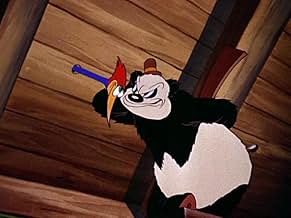Füge eine Handlung in deiner Sprache hinzuAndy Panda attempts to find out if he can catch a woodpecker by putting salt on its tail.Andy Panda attempts to find out if he can catch a woodpecker by putting salt on its tail.Andy Panda attempts to find out if he can catch a woodpecker by putting salt on its tail.
















